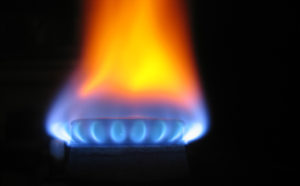 Natural gas was little changed in early European trading on Wednesday as investors weighed overall bearish weather sentiment ahead of tomorrows supposedly near-average inventory build.
Natural gas was little changed in early European trading on Wednesday as investors weighed overall bearish weather sentiment ahead of tomorrows supposedly near-average inventory build.
Natural gas for delivery in October traded 0.22% lower at $2.722 at 08:13 GMT, holding in a narrow daily range of $2.736 – $2.721. The contract tumbled 1.1% to $2.728 on Tuesday, paring Mondays 2.4% jump.
According to NatGasWeather.com, natural gas demand in the US will be low-moderate compared to normal through September 22nd, with a warm weather trend in effect for the southern, central and eastern US over the following seven days, while the Northwest will be near or cooler than normal.
Temperatures over the eastern US have warmed up to a few degrees above normal and will remain so through the end of the week. Afternoon highs will be in the 70s to mid-80s over the northern US, basically removing the need for cooling, while readings over the South will peak in the mid-80s to 90s, spurring only light cooling demand. Local demand will be highest in Texas and the Plains where highs will reach the low-mid 90s. A stalled frontal boundary will keep max temperatures over the Southeast within the 80s, curbing cooling demand to lighter than normal. Also helping limit demand, the West, including California, will become cooler as Pacific weather systems track inland with showers.
After temperatures warm up over the East by Friday, a fresh cool blast will hit the Midwest and interior Northeast this weekend, NatGasWeather.com said, dropping highs briefly into the 60s and 70s, before warming back to slightly above normal next week. As the week progresses, the central, southern and eastern US will remain dominated by high pressure, while the Northwest and northern Plains will be slightly cooler than normal due to Canadian systems passing through with showers.
Overall, weather sentiment remains skewed to the bearish side as readings across the north-eastern US hover near the average, slightly above or below at times, while the south-central US drives stronger cooling demand, but with no widespread heat, and the West offsets it with lighter such.
Temperatures
According to AccuWeather.com, temperatures in New York will peak at 84-87 degrees Fahrenheit through September 20th, compared to the average 74-75, before dropping into the mid-high 70s for the rest of the month. Chicago will max out at 81-83 degrees today and tomorrow, above the usual 75, followed by a cooling into the upper 60s and low-mid 70s through the start of October.
Down South, readings in Texas City will peak at 87-90 degrees the next seven days, slightly above the usual 86-88, followed by a drop to lower 80s for the rest of the month. On the West Coast, temperatures in Los Angeles will max out at 92-93 degrees on September 19-20th, compared to the average 83, before falling back to the mid 80s the next week and dropping further into the upper 70s by the end of the month.
Inventories
Last Thursday’s supply report by the EIA showed a smaller than expected build of 68 bcf for the week ended September 4th, 7 bcf below expectations, which brought the total gas held in US storage hubs to 3.261 trillion cubic feet. Still, the above-normal inventory gain helped expand a surplus over the five-year average stockpiles of 3.134 trillion to 4.1% from 4.0% a week earlier.
This Thursday’s report will likely print another near-average build, with early estimates pinning the number at about 74 bcf, compared to the five-year average gain of 75 bcf during the seven days ended September 11th, while stockpiles rose by 90 bcf a year earlier.
Next week’s inventory increase, however, is expected to exceed the average as the cool start to the tracked period over the eastern US is taken into account. The September 24th report is projected to print a stockpiles gain of about 105 bcf for the week ended September 18th, compared to the average gain of 83 bcf and the year-ago one of 96 bcf.
Pivot points
According to Binary Tribune’s daily analysis, October natural gas futures’ central pivot point stands at $2.748. In case the contract penetrates the first resistance level at $2.774 per million British thermal units, it will encounter next resistance at $2.821. If breached, upside movement may attempt to advance to $2.847 per mBtu.
If the energy source drops below its S1 level at $2.701 per mBtu, it will next see support at $2.675. In case the second key support zone is breached, the power-station fuel’s downward movement may extend to $2.628 per mBtu.
In weekly terms, the central pivot point is at $2.689. The three key resistance levels are as follows: R1 – $2.737, R2 – $2.781, R3 – $2.829. The three key support levels are: S1 – $2.645, S2 – $2.597, S3 – $2.553.





